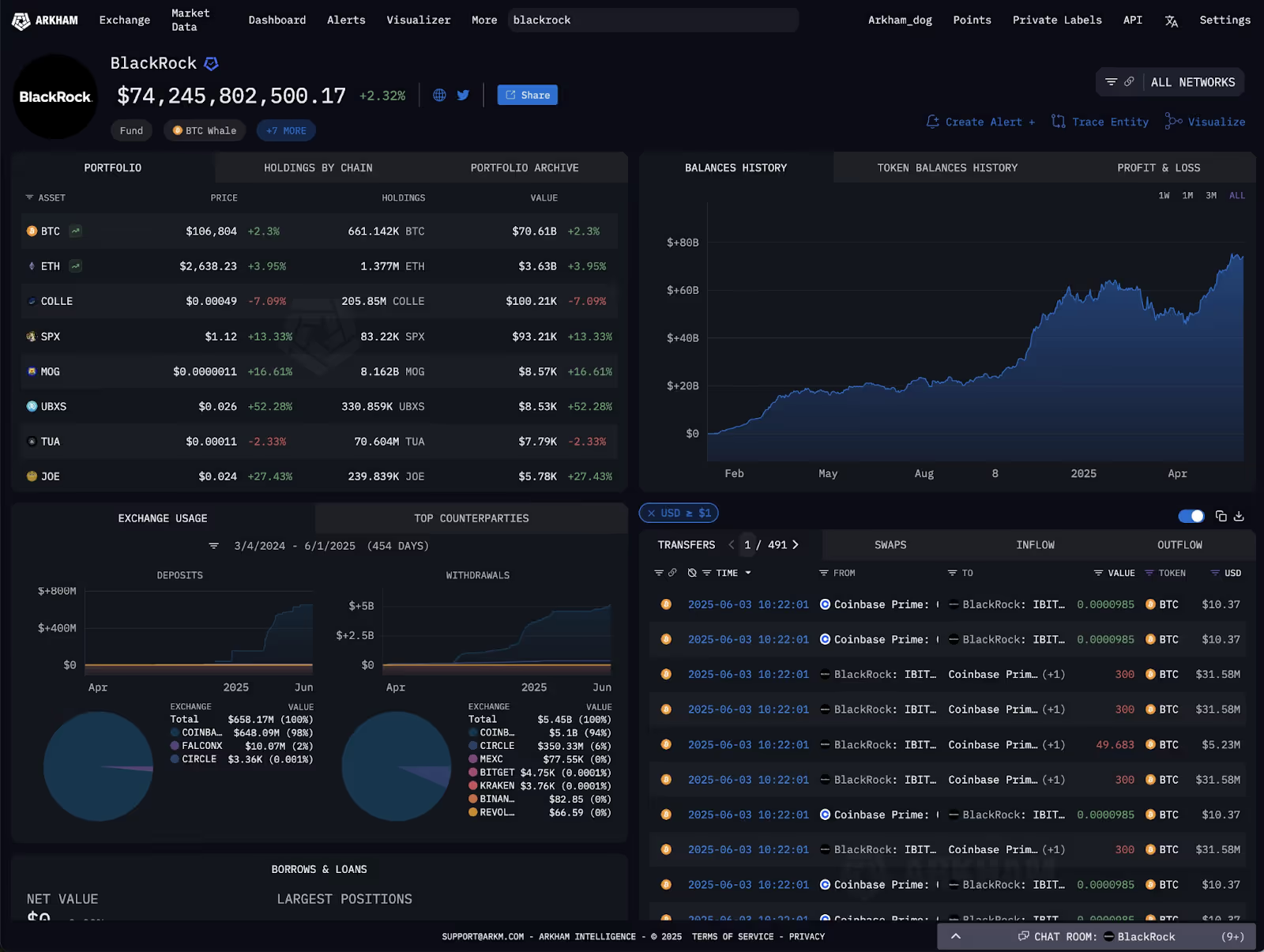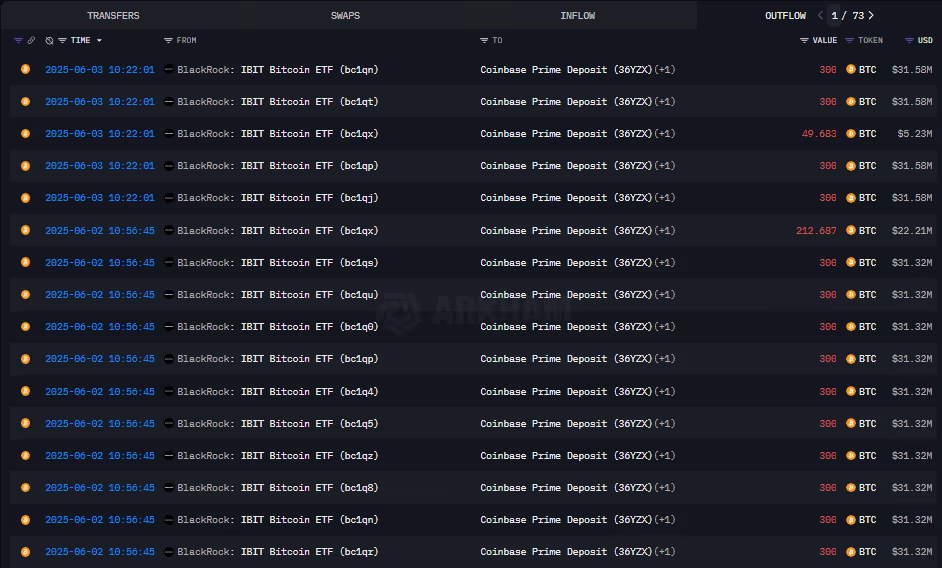June 4, 2025
at
12:00 am
EST
MIN READ
BlackRock’s ETH ETF, ETHA, is seeing large inflows this week

BlackRock’s ETH ETF, ETHA, is seeing large inflows this week, alongside outflows from their BTC ETF, IBIT. In this week alone, BlackRock addresses linked to their ETHA product saw more than $100M in ETH transfers, with almost $50M in the past 24 hours alone.
Spot Exchange-Traded Funds (ETFs) for cryptocurrencies, such as BlackRock's IBIT for Bitcoin and ETHA for Ethereum, represent a major bridge between traditional finance and the digital asset market. These financial products allow investors to gain direct exposure to the price movements of the underlying asset—be it BTC or ETH—by purchasing shares on conventional stock exchanges. This structure removes the complexities and security burdens of buying and self-custodying the actual cryptocurrencies, making it a more accessible investment vehicle for a broader range of institutional and retail participants.

The steady increase inflows into ETHA comes as IBIT sees heavy outflows from the start of the week. IBIT saw approximately $560M worth in outflows in the last 2 days, marking the first outflows from IBIT since early May.
The flow of funds into and out of these ETFs is a closely watched metric, serving as a barometer for market sentiment. Large inflows, as seen with ETHA, indicate strong buying pressure and bullish sentiment, suggesting that investors are allocating more capital to the asset. Conversely, significant outflows, like those experienced by IBIT, signal selling pressure and can reflect a bearish or profit-taking sentiment. This dynamic of capital rotation between different assets often highlights shifting market narratives and investor confidence.

The move could be associated with the Ethereum Foundation’s recent restructuring to focus on core goals including scaling the L1, scaling the L2 and improving Ethereum UX. Additionally, the announcement from SharpLink as the first significant ETH treasury company could also have shifted public perception surrounding the asset.
The Ethereum Foundation is a non-profit organization that plays a crucial role in supporting the research and development of the Ethereum ecosystem. Its focus on core goals like scaling is fundamental to the network's future. 'Scaling the L1' refers to improving the capacity and efficiency of the main Ethereum blockchain itself. 'Scaling the L2' involves supporting Layer-2 solutions that process transactions off the main chain to reduce costs and congestion. By prioritizing these technical upgrades alongside user experience (UX), the foundation aims to enhance Ethereum's ability to support a global ecosystem of applications, reinforcing its long-term value proposition.

























































































































































































































.png)